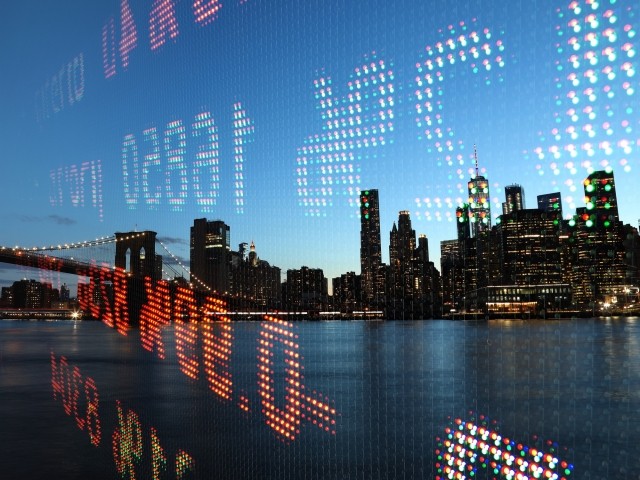Blog
90-Day SCA: The PSLRA “Bounce-Back” Rule
In this week’s D&O Notebook, my colleague Walker Newell takes a look at a little-discussed provision of the federal securities laws that caps shareholders’ damages if a company’s stock price rebounds after an initial drop. This rule—enacted in the Private Securities Litigation Reform Act of 1995 (PSLRA)—has not received a great deal of attention in case law over the years because fine distinctions regarding recovery get buried when cases are dismissed, withdrawn, or settled. Nevertheless, the rule is worth understanding because it makes cases less attractive to plaintiffs’ firms when a company’s stock price quickly rebounds after an initial drop. It’s also a good reminder that securities class action (SCA) damages are not always reflective of what we traditionally think of when we think of realized trading losses. —Priya Huskins
Here’s the basic thesis of private securities litigation from the plaintiff’s perspective.
Management lies about something important. These lies convince shareholders to buy stock at “artificially inflated” prices.
Later, when “the truth is revealed” to the market through “corrective disclosures,” the company’s stock price goes down. Because the stock price goes down, shareholders lose money. Because these losses were allegedly caused by management’s lies, shareholders should be made whole.
But what does “lose money” mean in this context? Do shareholders need to sell low after management’s lies cause a stock drop in order to be eligible to get paid? Put another way, do they need to actually realize losses from a trading perspective?
Not necessarily. More on this below.

But what if shareholders buy the company’s stock at an artificially inflated price and then sell it for a gain before the truth is revealed and the price declines? Surely the law says that those shareholders don’t get paid, right? Right (see the Supreme Court’s Dura opinion).
Sanity seems to be prevailing here. One more hypothetical, though.
What if shareholders hold stock through the stock price decline? And then the stock price later recovers to a higher price than the price at which the shareholders originally purchased the stock? Can these shareholders still get paid, even if they have not really realized a loss in the real world?
I’ll explain—but first, a quick history lesson.
The PSLRA’s 90-Day Bounce-Back Rule
The Private Securities Litigation Reform Act (PSLRA) turns 30 years young at the end of this year. Congress, overriding President Clinton’s veto, passed the PSLRA in December 1995. Fun fact for presidential history geeks: This appears to be the only time in President Clinton’s two terms in office that Congress overrode his veto of a major law.
President Clinton specifically took issue with a few key features of the PSLRA, including the law’s enhanced scienter pleading standards and the breadth of its “safe harbor” provisions. In the 30 years since, these two rules have been the subject of frequent and intense focus by the securities bar and the federal bench.
Unmentioned by President Clinton—and discussed relatively rarely since—was another PSLRA provision, which is sometimes called the 90-day bounce-back rule.
This rule says that securities class action damages “shall not exceed the difference” between the purchase price “and the mean trading price of that security during the 90-day period beginning on the date” of the corrective disclosure. The PSLRA defines “mean trading price” as “an average of the daily trading price of that security, determined as of the close of the market each day during the 90-day period.”
Let’s look at a hyper-simplified example of how this works. (In the real world, of course, damages calculations are much more complex. Shareholders trade in and out of stocks throughout class periods, with a different cost basis for each trade. Plaintiffs allege multiple corrective disclosures. But bear with me here.)
Some Hypothetical Bounce-Back Scenarios
First, Fake Co. management makes a false material statement.
Next, you buy one share of Fake stock at the artificially inflated price of $10 per share.
Then, on January 1, Fake publishes a corrective disclosure and the “truth is revealed” to the market. By January 10, Fake’s stock price has declined to $5 per share.
Over the course of January, February, and March, Fake stock bounces around. It reaches a low of $4 per share in late January and languishes around $6 per share for most of February. In March, however, Fake stock goes on a tear, finally closing at $12 per share on April 1. Because of the wild price action, Fake’s average closing price from January 1 to April 1 is $6 per share.
You held onto your single share of Fake stock throughout this period. On April 1, Fake’s stock price is higher than your purchase price. And you didn’t sell, so you haven’t suffered any measurable harm in the real world.
Despite this, you might be entitled to recover $4 from Fake—the difference between your $10 purchase price and the $6 mean closing price. The analysis hinges on the average trading price over the 90-day period post-corrective disclosure, not on whether a shareholder may have had an opportunity to sell for a gain on a particular day.
On the other hand, the 90-day bounce-back rule is a cap on total damages, not a mandatory method of calculating damages, so a court might find this windfall on paper to be inequitable.
On the other hand, where do you draw this line as a court? What if the stock is trading at $5 per share at the time of litigation two years later, and a shareholder is still holding shares? At some point, if you are going to allow recovery for shareholders who did not actually sell for a loss, you have to temporally separate subsequent price action from the disclosures that form the basis of the litigation. Ninety days—i.e., a quarter—seems reasonable.
(As an aside, if you did sell your Fake stock for $12 on March 31, I think a court would say that you can’t recover anything. And this convention—if you realized gains during the 90-day bounce-back period, you don’t recover—is commonly adopted in securities class action settlements.)
In the real world (more on this below), these questions are rarely addressed squarely by courts. This is because when parties get around to serious discussions about losses, it is in the context of negotiated settlements.
What if you sell your Fake stock for $15 on June 1—after the 90-day window has closed? Can you make both a $5 profit from your actual sale of stock and an additional $4 windfall from participating in a securities class action recovery? Maybe!
Parties often agree on—and courts approve—settlements that are distributed to those who held shares through the corrective disclosure and continued to hold the shares through the 90-day bounce-back period. In these cases, there is typically no additional digging into whether or not the shareholders may have continued to hold the shares.
The 90-Day Bounce-Back Rule in the Real World
Courts occasionally do address the substance of the bounce-back rule in written decisions. For example, it comes up from time to time in motion to dismiss and class certification proceedings in connection with the question of whether plaintiffs have alleged that they suffered a loss.
However, the rule is mostly important because of the cases that are never filed (or filed and later withdrawn). If a company suffers a huge stock drop in the wake of a damaging disclosure, plaintiffs’ lawyers will take a long, hard look. One of the things they will be looking at is how the stock price performs in the ensuing 90 days. If the stock price mostly recovers, does so quickly, and stays in that range, the case may be less attractive because damages will be lower. If the stock price recovers fully and quickly and stays in that range, the case may be a loser.
Securities class actions almost never go to trial. When shareholders receive money, it is through a settlement negotiated between the parties, approved by a federal judge, and distributed by a claims administrator. In negotiations, plaintiffs point to broad measures of total hypothetical damages that might be available in a trial before ultimately settling the case for a small fraction of that amount. Importantly, however, the measure of damages is a critical anchor point for the ultimate settlement negotiation. It is also relevant to the distribution of the settlement proceeds.
Once a settlement in principle is reached, the parties draft a bunch of documents and submit them to the judge for preliminary and then final approval. These documents include a “Plan of Allocation,” which defines how the claims administrator will distribute the settlement proceeds.
The parties engage experts and endeavor to distribute settlement proceeds in accordance with the law, including by engaging with different scenarios regarding the timing of trades and corrective disclosures. Based on a defined approach, the claims administrator will allocate the settlement to shareholder claimants on a pro rata basis proportionate to the amount of harm they suffered.
In the administration process, the 90-day bounce-back rule throttles damages for some shareholders. Conversely, as discussed, this can also mean that shareholders who held shares through the corrective disclosure and continued to hold for 90 days thereafter will be entitled to recovery—even if they may have subsequently realized actual trading gains on some future date.
For companies with a well-tailored insurance program, Side C of the D&O insurance policy should step in to pay the cost of settlement (after the self-insured retention has been satisfied). If a company’s D&O insurance program fails to respond due to an exclusion, or if the D&O program’s limits are insufficient, the company will have to use its balance sheet to pay the settlement.
Conclusion
The 90-day bounce-back rule was Congress’s way of attempting to eliminate weird windfall payments for shareholders who were not actually harmed by securities fraud. As we have seen, the rule potentially allows for some odd hypothetical outcomes, outcomes that likely do take place to some degree in the real world in the context of settlement administration.
More importantly, the rule is a meaningful limiter on weak securities cases that rely on temporary stock drops. The more that a company’s stock price rebounds from a significant drop within the following 90 days, the less attractive a potential securities class action case becomes.
Author
Table of Contents











